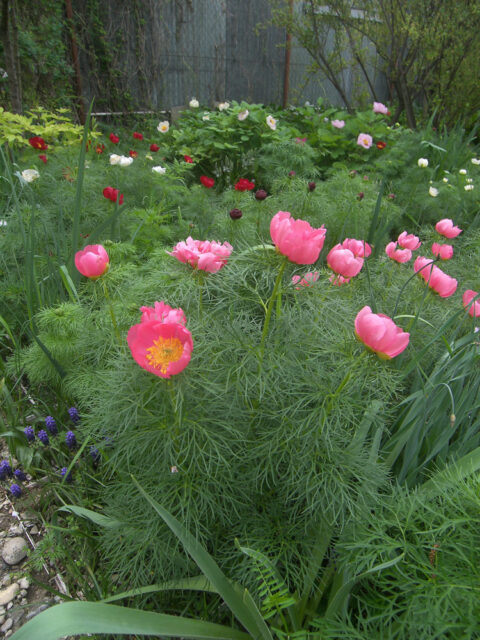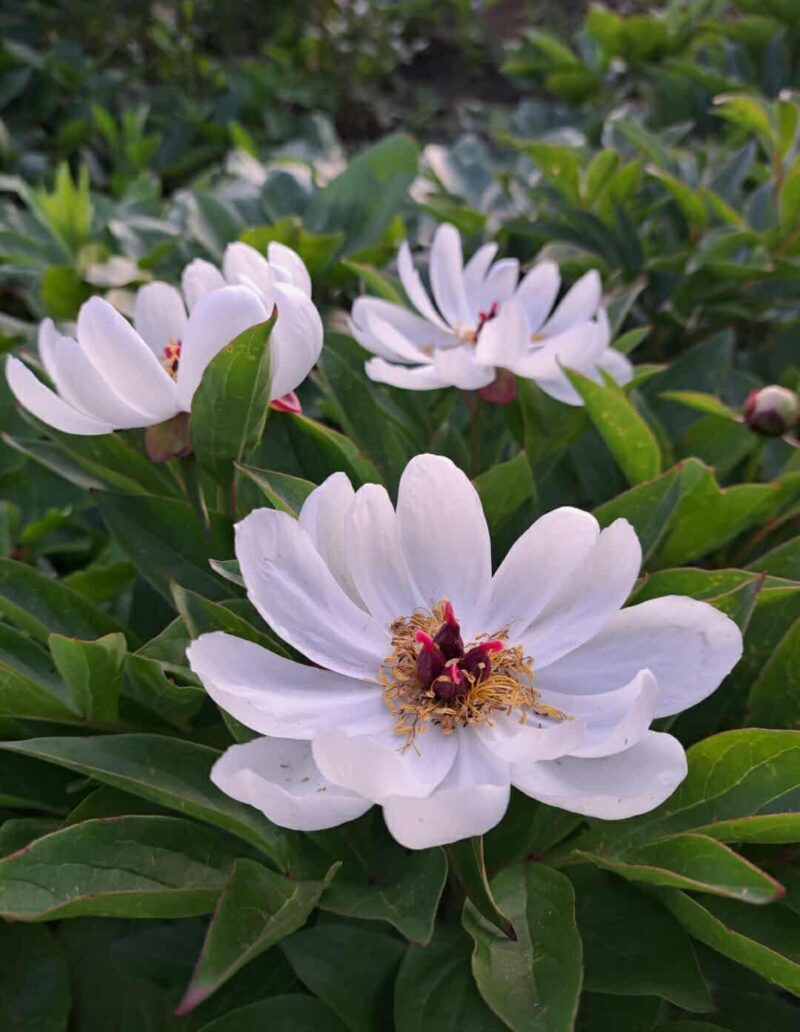Sergey Banketov
Country:
Russia, Stavropol Region
Short biography:
I am 57 years old. Married. I grow plants in my garden.
More information:
How did you first get involved in peony hybridizing?
I began hybridizing peonies in 2017. Ten years earlier, I had been conducting interspecific hybridization of irises and some other plants. I had been familiar with hybridization since early childhood (10-12 years old) from books and magazines.
What was your starting material for your hybridizing?
Species plants.
What are your goals in hybridizing peonies?
My goal of hybridization is to uncover the secret of peonies’ origins and evolution. Beautiful and unusual forms are a consolation prize for this goal.
Do you mostly depend on open pollination or do you mostly make controlled crosses?
| 100% open | 50/50 | 100% controlled |
How large is your hybridizing program?
It all depends on the year, the weather, and my mood. On average, 300-500 crosses are made per year. I sow an average of 2,000-5,000 seeds per year. I haven’t counted the seedlings, but it’s probably more than 10,000.
Do you have any plants in the market?
My plants are currently unavailable on the general market. To purchase a plant, please contact me directly.
Can you describe a few of your plants that you consider the best or most beautiful and which are available now?

Paeonia tenuifolia Pyatigorsk
Paeonia tenuifolia ‘Pyatigorsk’ – is a standard bicolor form of the thin-leaved peony.
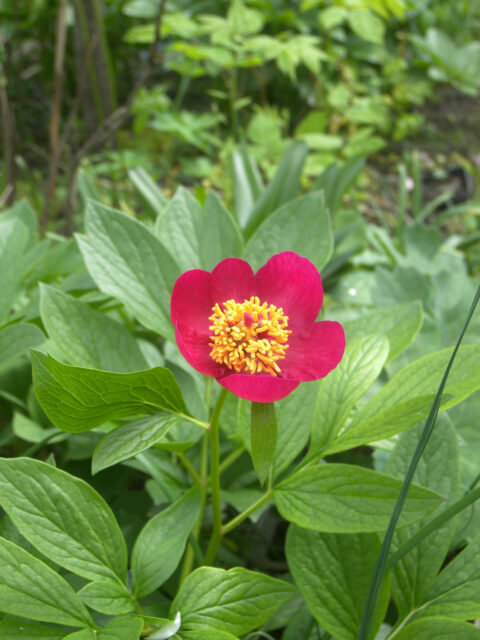
Paeonia peregrina x wittmaniana
Paeonia peregrina x wittmanniana var. nudicarpa – is an interspecific hybrid with early flowering and a good bush shape.
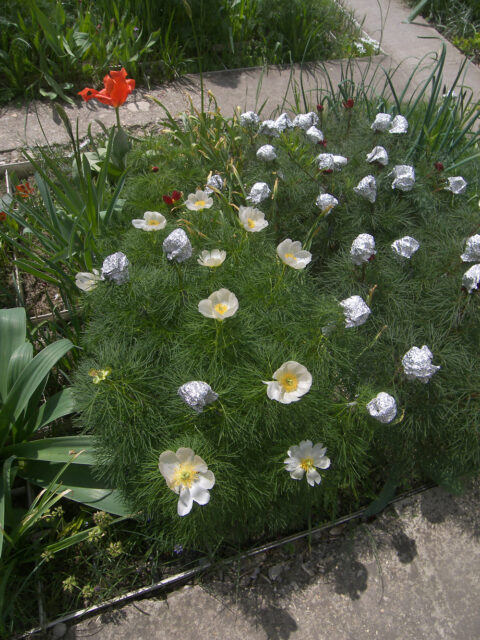
Paeonia tenuifolia f. alba
Paeonia tenuifolia f. alba L2017 – White form of the thin-leaved peony, distinguished by greater drought resistance and more active growth compared to other white forms of this species.
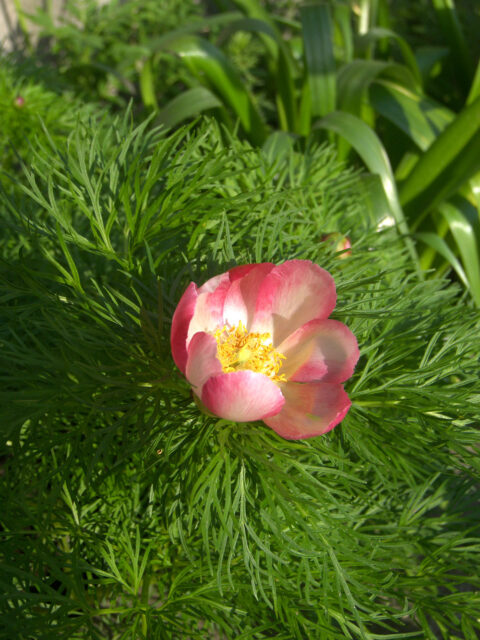
Paeonia tenuifolia Knyaginya Olga
Paeonia tenuifolia “Knyaginya Olga” – is a bicolor form of the thin-leaved peony with a predominance of white color.
Within your current seedlings, what are the most promising ones?

Paeonia arietina x P. mloko
Paeonia arietina x P. mlokosewitschii is promising for further selection as it has fertile pollen and carries the genes of the yellow-flowered peony.

Paeonia tenuifolia Dimon

Paeonia tenuifolia Dimon
Paeonia tenuifolia “Dimon” – The double form of the thin-leaved peony is distinguished by a more compact and elegant flower shape, which does not fall apart or droop from the heavy weight, as in the usual common double form.
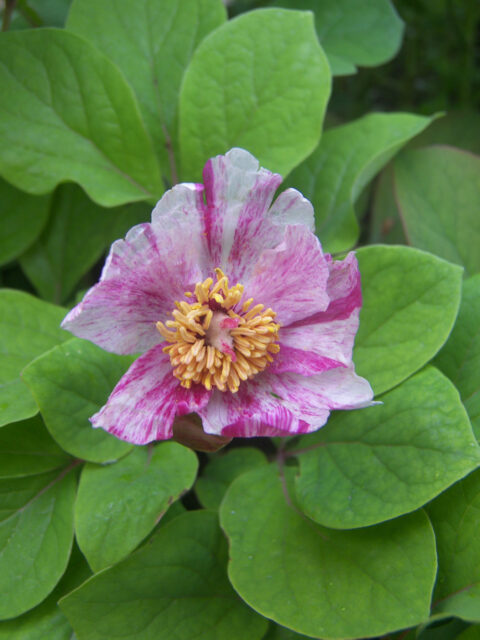
Paeonia caucasica f. alba х P. tenuifolia “Alisa”
Paeonia caucasica f. alba х P. tenuifolia “Alisa” – interspecific hybrid with a two-color transposon (jumping genes) flower color.
Are you in contact or working together with other peony hybridizers?
Very rarely, as I’m more interested in interspecific hybridization or hybridization of forms of a specific species. And such hybridizers are very few.
Do you have unregistered plants that are not good enough to introduce but have something ‘special’?
Yes, there are quite a few such plants. They represent forms of pure species or hybrids that can be used for subsequent hybridization. For example, natural forms of Paeonia tenuifolia are capable of crossing with tetraploid peonies. Or forms of Paeonia tenuifolia that grow to about 80 cm in height, a trait that is passed on during crossbreeding.
Would you like to exchange such ‘hybridizers plants’ with other hybridizers?
If interests coincide, then it is quite possible.
Do you know the American Peony Society (APS)? Are some of your plants registered with them? Do you have any suggestions?
Yes, I know them. I am not a member of the society. But the society’s website isn’t always accessible. My plants aren’t registered with the APS. I didn’t have enough time to figure out the procedure. A little work should be done on the administration of the society’s website so that it is accessible at any time and in different countries.
Final question. Any remarks or suggestions you may have…
It’s worth noting that climate change is leading to aridization. This has become very noticeable. This will negatively impact varieties based on Paeonia lactiflora, which, in my experience, are the most moisture-demanding of all existing peony species. The popularity of these varieties will decline, despite their beauty and lushness. Therefore, I propose paying more attention to arid peony species and actively breeding and hybridizing them with more moisture-loving species to improve their drought tolerance. This will not only inspire hybridizers but also inject new life into existing peony varieties. And thus, it will serve as a measure to preserve such a beautiful and ancient plant known to mankind as the peony.
E-mail of this person is known to the author. If you want to contact him/her, fill out this contact form which will be sent to the author after which he can forward it to this hybridizer.
